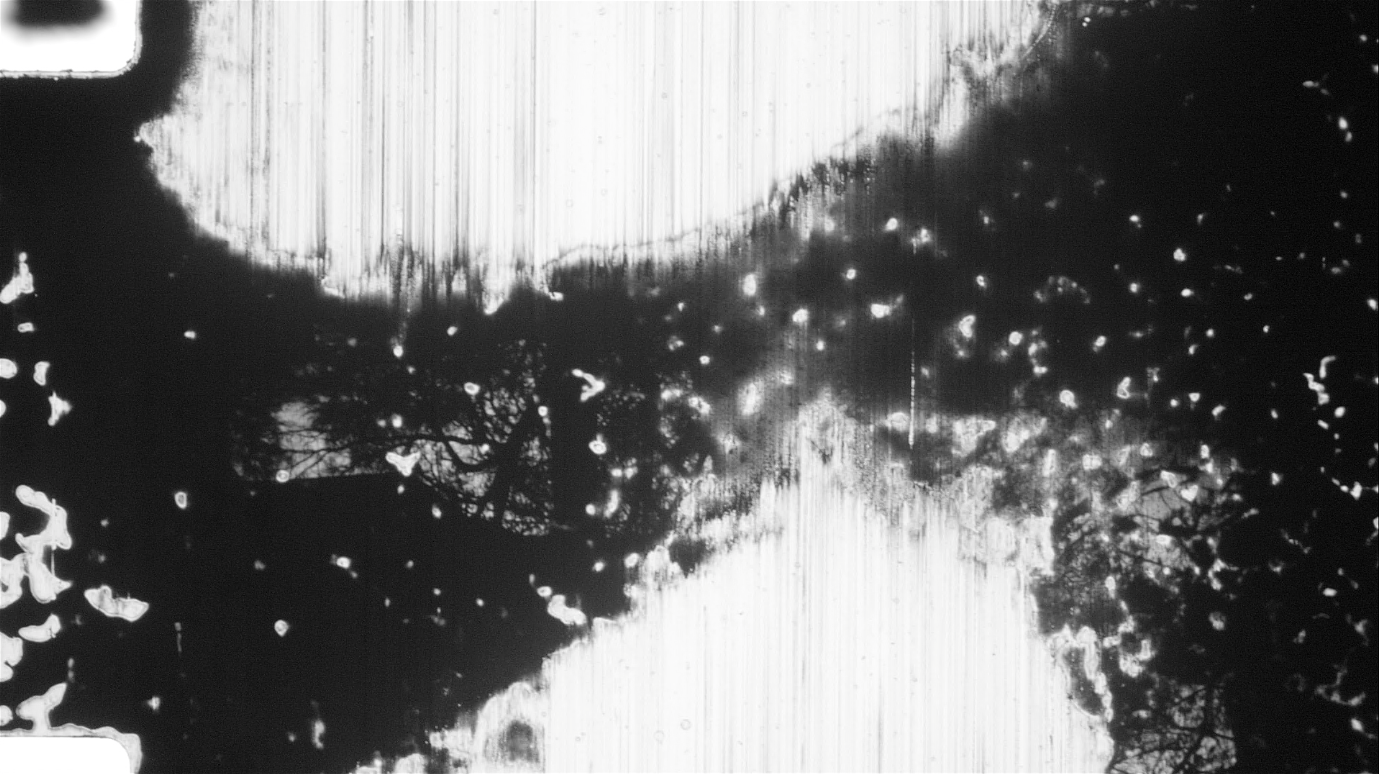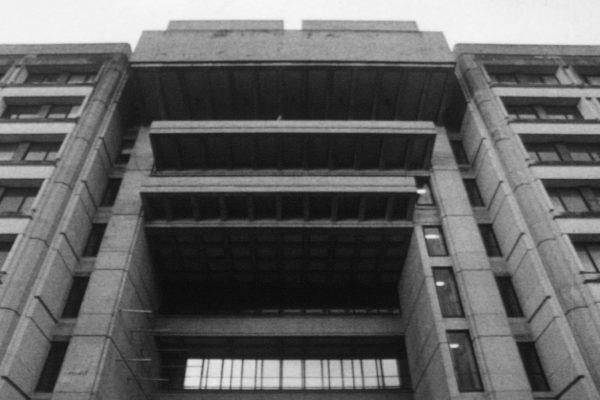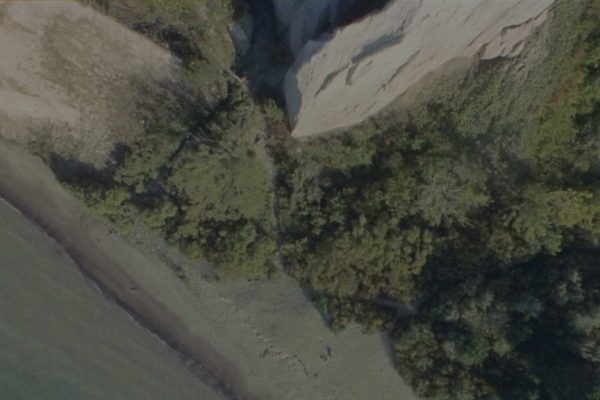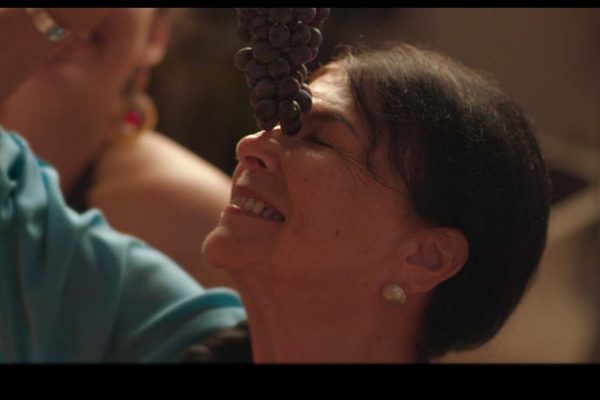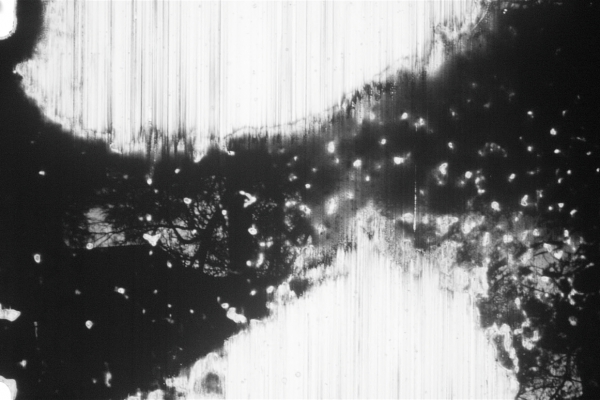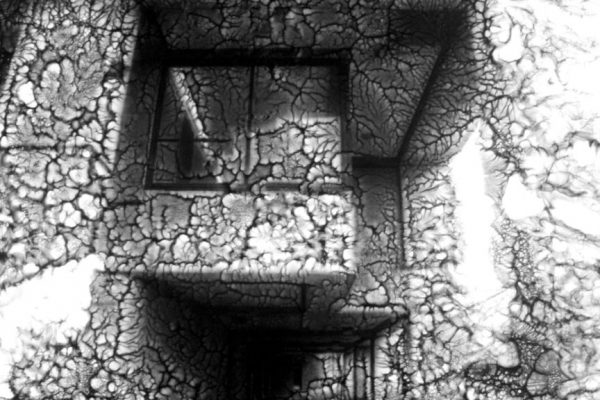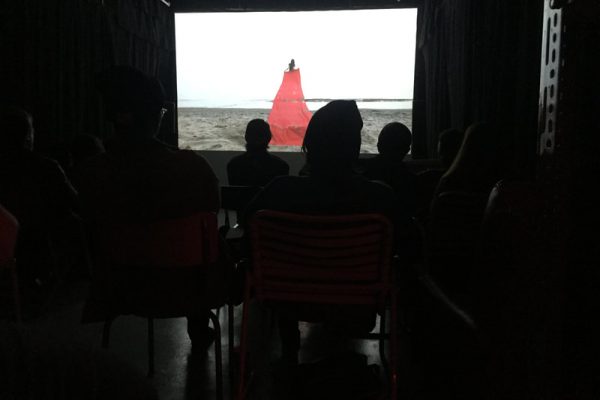Quand | When
14.12.2017 | 20h00
Où | Where
la lumière collective
7080, rue Alexandra, Montréal [QC]
Média | Media
16mm | HD
En présence de la cinéaste.
Billets | Tickets
7$ à la porte
“Since 2012, Eva Kolcze has developed films of visceral materiality. She fashions her films out of the surface marks of chemistry and the refiguration and destruction of emulsion across the frame. These films are the work of an artist concerned primarily with elaborating on the existing image.” – Stephen Broomer
Suivant son départ délibéré du milieu de l’architecture académique, Rhayne Vermette a établi une pratique artistique distincte axée sur la construction d’images par le biais du cinéma et de la photo.
EVA KOLZCE
Eva Kolcze est une artiste, cinéaste et éducatrice basée à Toronto qui réalisent des films et installations portant sur les thèmes du paysage, de l’architecture et du corps. Son travail a été présenté par diverses institutions et festivals tel que la National Gallery of Canada, le Musée d’art contemporain de Montréal (MAC), la Anthology Film Archives, le Gardiner Museum, la Cinémathèque québécoise, Birch Contemporary, International Rotterdam Film Festival et Images Festival. Kolcze a aussi dirigé des ateliers de réalisation cinématographique dédiés aux enfants et adultes lors du Festival International du Film de Toronto, à l’Université York, au Centre Harbourfront, à la Liason of Independent Filmakers of Toronto et à Artscape Gilbraltar Point. Elle détient un baccalauréat en beaux-arts de l’Université OCAD et une maîtrise en beaux-arts de l’Université York.
Eva Kolcze is a Toronto-based artist, filmmaker and educator who creates films and installations based around themes of landscape, architecture and the body. Her work has screened at venues and festivals including the National Gallery of Canada, Musée d’art contemporain de Montréal (MAC), Anthology Film Archives, the Gardiner Museum, Cinémathèque québécoise, Birch Contemporary, International Rotterdam Film Festival and the Images Festival. She’s also instructed youth and adult filmmaking workshops at the Toronto International Film Festival, York University, Harbourfront Centre, Liaison of Independent Filmmakers of Toronto and Artscape Gibraltar Point. She holds a Bachelor of Fine Art from OCAD University and a Master of Fine Art from York University.
TOPOGRAPHY + TRACES
[Oeuvres choisies par | Works programmed by Eva Kolzce]
20h00 | 59 min
- RECLAMATION
- GULLS AND GIBRALTAR
- VOLE,VOLE TRISTESSE
- DUST CYCLES
- TOWARDS THE COLONIES
- ALL THAT IS SOLID
- CREATURA DADA
- BADLANDS
Melissa General | 2014 | digital | sound | colour | 7 min
Reclamation a été réalisé lors d’une résidence à Artscape Gibraltar Point sur l’île de Toronto. Pendant cette résidence, j’ai appris que l’île était autrefois une péninsule où se rendaient les Anishnaabeks pour guérir. Reclamation explore la relation entre le corps indigène, la terre et l’eau.
Reclamation was created during a residency at Artscape Gibraltar Point on Toronto Island. During the course of my residency I learned that the island was once a peninsula which the Anishnaabek used for healing. Reclamation explores the relationship between the Indigenous body, the land and the water.
Stephen Broomer | 2015 | 16mm | silent | colour | 3 min
Des mouettes planent et plongent près de la côte de Gibraltar Point. Des horizons multiples, inclinés, camouflent les oiseaux; les mouettes solitaires sont tantôt séparées, tantôt rassemblées. Réalisé avec l’assistance d’Eva Kolcze. Merci à Emmalyne Laurin et Cameron Moneo
Seagulls hover and dip on the rocky coastline of Gibraltar Point. Tilting and multiple horizons camouflage the birds, splintering and gathering the lone gull to the flock. Made with the assistance of Eva Kolcze. Thanks to Emmalyne Laurin and Cameron Moneo.
Miryam Charles | digital | 2015 | sound | colour | 6 min
À la suite d’une explosion nucléaire qui transforme la voix de tous les habitants d’une île, une journaliste finlandaise se rend sur place afin d’y retrouver un ermite aux pouvoirs mystérieux. – [La Distributrice de films]
Following a nuclear explosion that transforms the voice of all the inhabitants of an island, a Finnish journalist goes there in order to find a hermit with mysterious powers. – [La Distributrice de films]
Eva Kolcze |2017 | 16mm/4K | sound | b&w | 14 min
Dust Cycles étudie le passé et le présent des falaises de Scarborough. Des couches de roche et d’argile révèlent la dernière période glaciaire à ses habitants actuels dont les propriétés sont au bord de la destruction. – [Festival du nouveau cinéma]
Dust Cycles uses 16mm film and aerial video footage to explore the remarkable landscape of the Scarborough Bluffs, a string of cliffs located at the eastern edge of Toronto’s waterfront that are imbued with multiple collisions, contradictions, and temporalities.
Miryam Charles | 2016 | digital | sound | colour | 5 min
Lorsqu’une jeune fille est retrouvée au large de la côte vénézuélienne, un médecin légiste tente de déterminer les causes du décès avant que le corps ne soit rapatrié. – [La Distributrice de films]
When a young girl is found off the Venezuelan coast, a medical examiner will try to determine the cause of death before the body is repatriated. – [La Distributrice de films]
Eva Kolcze | 2014 | 16mm to digital | sound | b&w | 16 min
All That Solid observe l’architecture Brutaliste à travers la surface d’une pellicule noir et blanc. Le film présente trois exemples proéminents de l’architecture Brutaliste : la librairie Robarts, le campus de l’Université de Toronto et celui de l’Université York. Les images de ces édifices ont été altérées à l’aide de plusieurs procédés chimiques et physiques. Le film explore les visions utopiques qui ont inspiré le mouvement Brutaliste, et le lien matériel et esthétique entre le béton et la pellicule.
All That Is Solid investigates Brutalist architecture through the surface of black and white celluloid. The film features three prominent examples of Brutalist architecture, Robarts Library, U of T Scarborough campus and York University campus. Footage of the buildings has been degraded using a number of chemical and physical processes. The film explores the utopian visions that inspired the Brutalist movement and the material and aesthetic connection between concrete and celluloid.
Caroline Monnet | 2010 | digital | sound | colour | 4 min
Six femmes de tête autochtones se réunissent pour célébrer un nouveau départ et la fin du monde tel qu’on le connait.
Six powerful native women gather up to celebrate a new beginning and the end of the world as we know it.
Eva Kolcze | 2013 | 16mm/Super8/digital | silent | b&w | 4 min
Les Badlands de Cheltenham sont des formations géologiques à ciel ouvert, qui recouvraient jadis le fond d’un ancien lac. L’eau y a sculpté ce paysage aride et vallonné. Tourné en HD et super-8, le film utilise également du celluloïd détérioré dans la terre et dans l’eau. – [Light Cone]
The Cheltenham Badlands are exposed geological formations that once lay beneath an ancient lake. The barren, rolling landscape was sculpted by the water that flowed over it. Shot in HD and super 8, the film also features celluloid that has been decayed in soil and water
Translation to French © Emma Roufs
